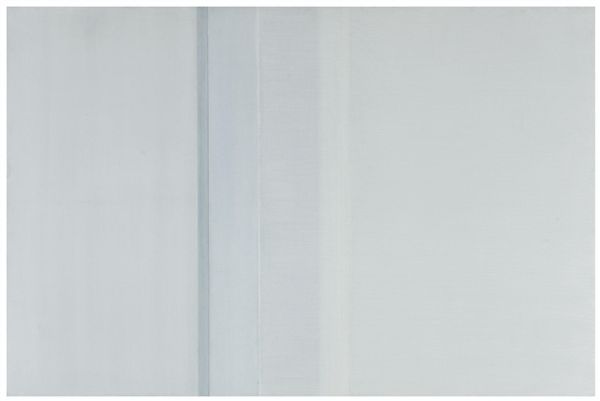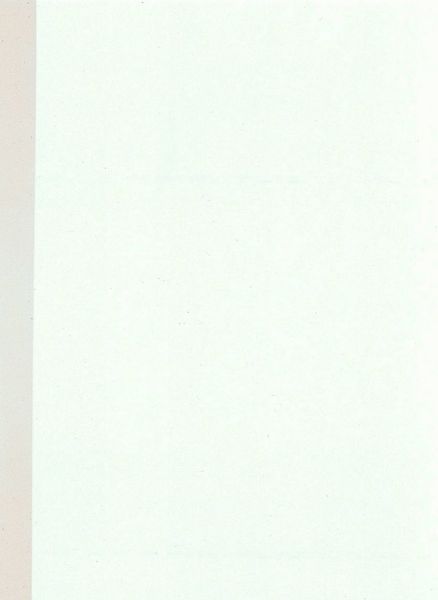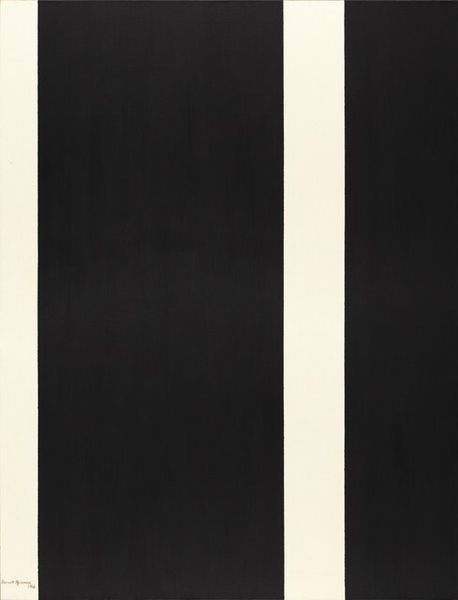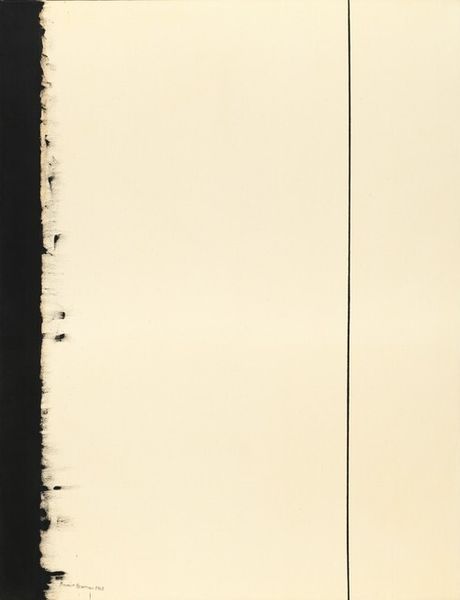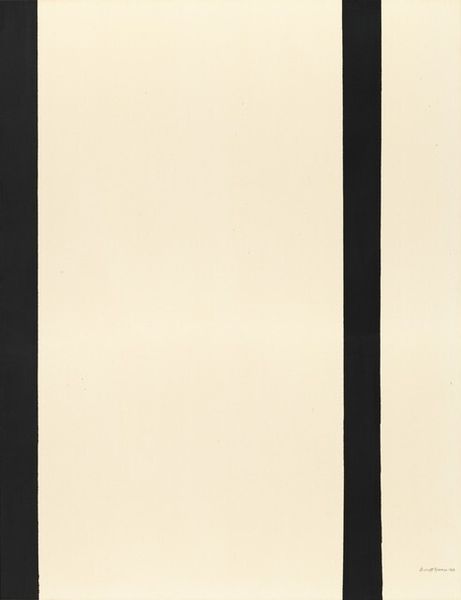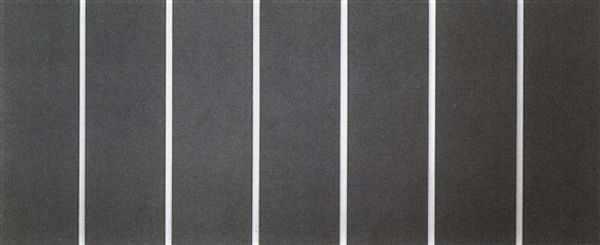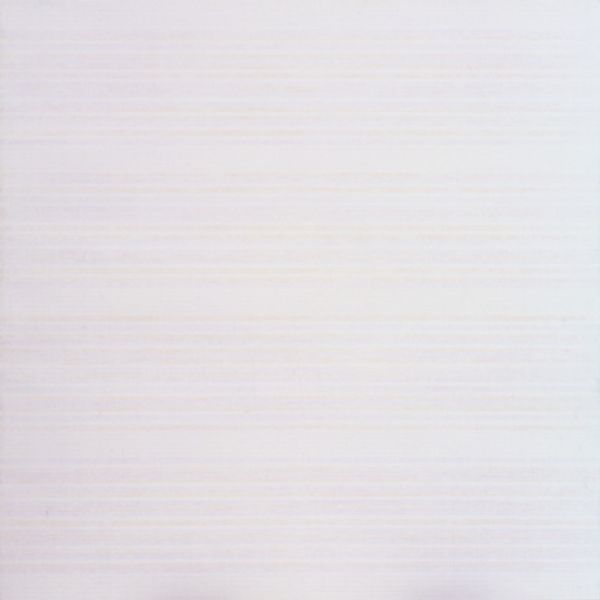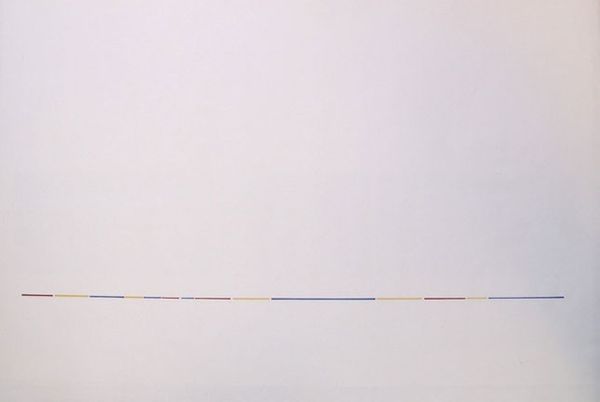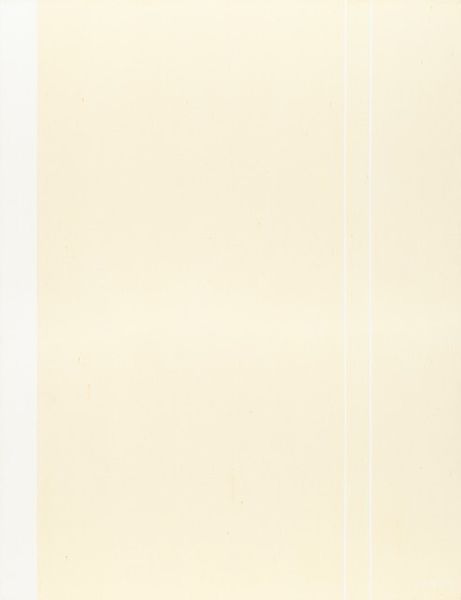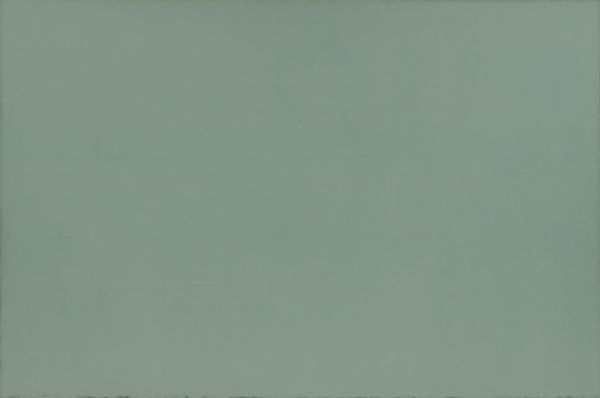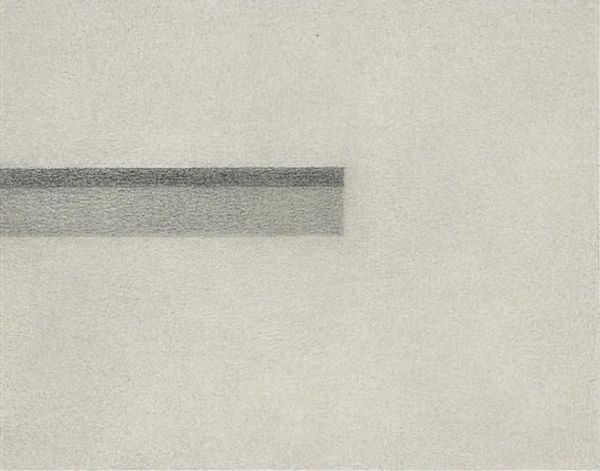
Vertical Composition with Blue and White 1936
0:00
0:00
pietmondrian
Kunstsammlung Nordrhein-Westfalen, Düsseldorf, Germany
painting, acrylic-paint
#
de-stijl
#
neo-plasticism
#
non-objective-art
#
painting
#
geometric composition
#
acrylic-paint
#
form
#
geometric
#
geometric-abstraction
#
abstraction
#
line
#
abstract composition
#
geometric form
#
modernism
Dimensions: 121.3 x 59 cm
Copyright: Public domain
Curator: Standing before us is Piet Mondrian's "Vertical Composition with Blue and White" from 1936, now residing in the Kunstsammlung Nordrhein-Westfalen in Dusseldorf. Editor: Okay, so, straight up, it gives me this feeling of…organized serenity. It's weirdly calming, isn't it? That limited palette, the grid—it's like visual yoga. Curator: Yes, a very apt description! Mondrian's dedication to a reduced vocabulary, vertical and horizontal lines and the primary colors, embodies his pursuit of universal harmony, something beyond the chaotic surface of reality. It’s central to his Neo-Plasticism. Editor: See, I’m all about finding patterns, even in what looks simple. And with Mondrian, it's hard to escape the echoes of architecture, cityscapes... but stripped down to their barest bones. Does that blue square at the top right symbolize something specific, like some kind of cosmic lid? Curator: Mondrian felt that color and form possess intrinsic meaning, blue often represents spirituality, or the infinite. But note that it's contained, carefully placed within the grid, mirroring a constant negotiation between the individual and the universal. The grid structure also provides viewers the way of understanding our place and belonging within that very world. Editor: Okay, so contained spirituality. That resonates. And that creamy, off-white—it softens the whole thing, stops it from feeling too clinical, too…mathematical. There’s a humanity in that imperfection, right? Curator: The asymmetrical balance plays an equally important role, providing the visual tension—a visual counterpoint of spirituality and being that engages us—avoiding static symmetry, thereby alluding to life’s dynamic essence. The lines, acting as conduits, direct our awareness, subtly implying the underlying structures organizing reality beyond what’s seen, reminding us to acknowledge life’s interconnected forces. Editor: Which is kind of a heavy thought for what looks, at first glance, like an aesthetically pleasing arrangement of lines and shapes. So, you came in to look at something ‘minimalistic’ but came out seeing your existence in a global context. Pretty wild. Curator: Indeed, Mondrian's work encapsulates how less can indeed be so much more. Editor: I agree, after further thinking and meditation on his artistic choices, that is pretty…cool, not in the trendy sense, but eternally intriguing, thank you.
Comments
No comments
Be the first to comment and join the conversation on the ultimate creative platform.
